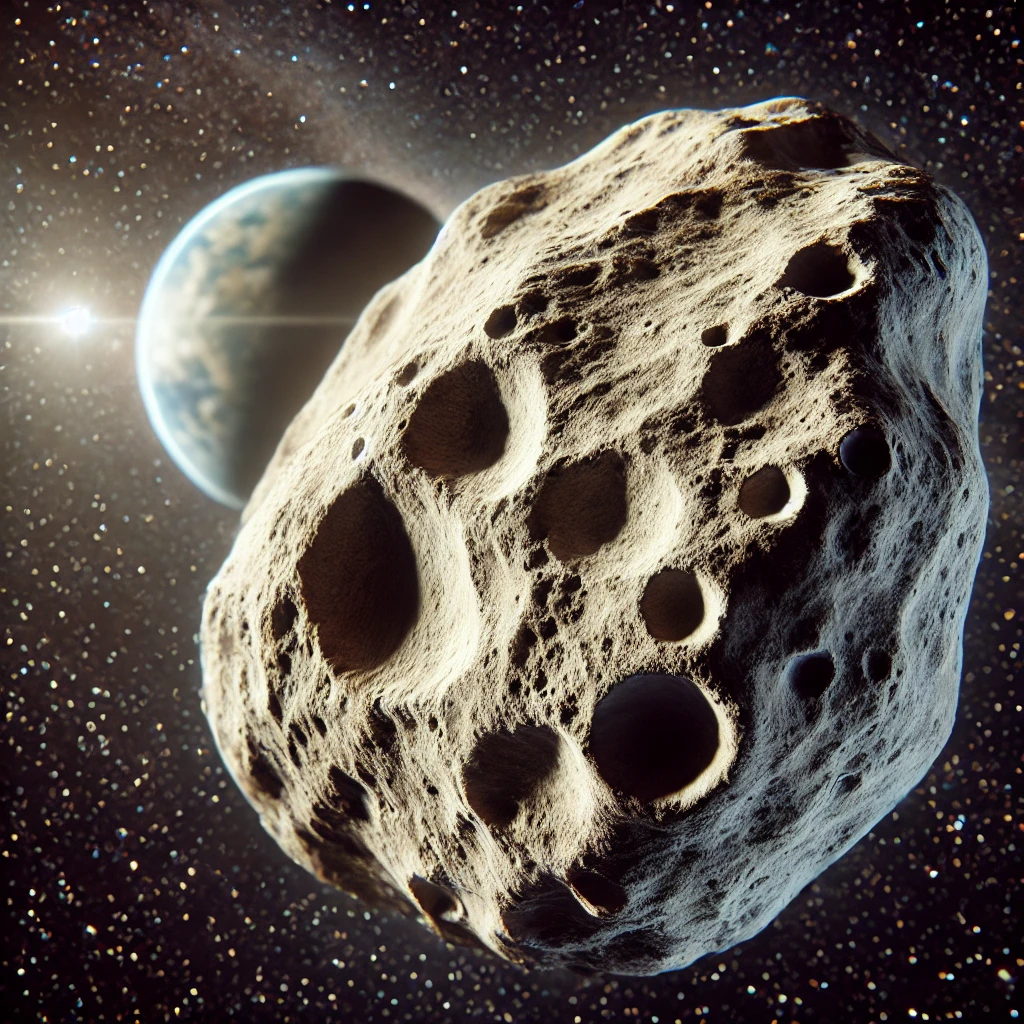

NASA Warns of Asteroid 2024 JV33 Approaching Earth: Should We Worry?
NASA warns of asteroid 2024 JV33 approaching Earth, but should we be concerned? As a space enthusiast tracking near-Earth objects, I’ve gathered the essential facts about this cosmic visitor that made headlines in August 2024. This peanut-shaped space rock caught the attention of astronomers and media outlets alike as it zoomed past our planet at over 24,000 mph.
The Peanut-Shaped Space Rock: What Is 2024 JV33?
When NASA’s Goldstone Solar System Radar captured images of 2024 JV33, they revealed something quite fascinating:
- A massive space rock measuring 620 feet (190 metres) in diameter
- Unusual peanut-like shape with two distinct lobes (contact binary structure)
- Clocked at a blistering speed of 24,779 miles per hour (11.08 km/s)
- Rotation period of seven hours (relatively stable for near-Earth asteroids)
- Classified as an Apollo-group asteroid (Earth-crossing orbit)
This bifurcated shape isn’t actually rare – about 14% of near-Earth objects larger than 660 feet show similar structures. Astronomers believe these contact binary asteroids form through low-velocity collisions between smaller asteroids in the main belt.
The asteroid’s elongated form (980 feet or 300 metres long) with its distinctive width-to-length ratio of 1:2 and “two-lobed” appearance suggests it’s likely a rubble-pile structure held together by weak gravitational forces rather than a solid chunk of rock. Spectral analysis indicates it likely contains silicates and metals, typical remnants from the early solar system’s planetesimal collisions.
How Close Did 2024 JV33 Really Come to Earth?
On August 19, 2024, asteroid 2024 JV33 made its closest approach to Earth, coming within:
- 2.85 million miles of our planet
- That’s roughly 12 times the lunar distance (the gap between Earth and Moon)
- Close enough to be classified as a “near-Earth object” (NEO)
- Its closest documented approach to Earth since at least 1919
While this might seem incredibly far in human terms, in the cosmic scale of space monitoring, it’s close enough to warrant NASA’s attention and trigger official warnings. News outlets described it as “approaching Earth at alarming speed,” though astronomers were never concerned about an impact.
How Was Asteroid 2024 JV33 Discovered and Tracked?
The asteroid first appeared on NASA’s radar (quite literally) on May 4, 2024, spotted by the NASA-funded Catalina Sky Survey based in Tucson, Arizona.
The discovery journey included:
- Initial detection by Catalina Sky Survey telescopes
- Prompt cataloging with the Minor Planet Center (international repository for celestial object data)
- Preliminary classification as an Apollo-group asteroid (a category of NEOs with Earth-crossing orbits)
- Orbital calculations to determine its trajectory and potential risk
- High-resolution imaging via the Goldstone Solar System Radar on August 18, just one day before closest approach
This comprehensive tracking allowed scientists to:
- Determine its precise size and shape
- Calculate its rotation period
- Refine orbital parameters to reduce trajectory uncertainties
- Confirm it posed no immediate threat to Earth
Should We Be Worried About 2024 JV33? The Risk Assessment
The short answer: not right now.
Despite its “potentially hazardous asteroid” (PHA) classification, current orbital calculations show 2024 JV33 will remain a safe distance from Earth for at least the next century. Radar ranging during the flyby refined its orbital parameters, reducing uncertainties by orders of magnitude.
Why NASA classified it as “potentially hazardous”:
- Its size exceeds 140 metres in diameter (at 620 feet/190m, it’s well above this threshold)
- Its minimum orbit intersection distance (MOID) with Earth falls within 0.05 astronomical units
- These thresholds were established by the International Astronomical Union for PHA designation
- It follows a highly elliptical orbit with a semi-major axis of 1.8 astronomical units
If an impact were to occur (which is NOT predicted), an asteroid of this size could release energy equivalent to about 50 megatons of TNT – enough for regional devastation but orders of magnitude smaller than the Chicxulub impactor that contributed to the extinction of dinosaurs.
According to Forbes, NASA’s monitoring of asteroids like 2024 JV33 is part of routine planetary defense – not cause for public alarm.
How Does 2024 JV33 Compare To Other Near-Earth Asteroids?
Let’s compare 2024 JV33 with other asteroids to understand the spectrum of space rocks NASA monitors:
2024 JV33:
- 620 feet (190m) diameter
- Well-tracked with precise orbit predictions
- No impact risk for at least 100 years
- Next close approach: August 2026
- Contact binary structure (peanut-shaped)
- Apollo-group asteroid with Earth-crossing orbit
2024 YR4:
- Smaller (40-90 metres diameter)
- Detected January 2025
- Less orbital data available
- 2.3% probability of Earth impact on December 22, 2032
- Assessment remains provisional pending more observations
- Reddit discussions show this asteroid generated more public concern
2024 PT5 (Lunar Ejecta):
- Serendipitous discovery
- Reflectance spectrum matches lunar highland regolith
- Likely originated from Moon impact ejection
- Represents a different NEO source than main-belt asteroids like 2024 JV33
- Complicates asteroid provenance analysis
- Documented in recent scientific literature
This comparison highlights why early detection and tracking matter so much in planetary defence, as some asteroids present higher uncertainty than others.
How NASA Keeps Watch Over Potentially Hazardous Asteroids
When NASA warns of asteroid approaches like 2024 JV33, it’s the result of a sophisticated monitoring infrastructure. The space agency employs:
- The Planetary Defence Coordination Office (PDCO) – coordinates all NEO tracking efforts
- A global network of ground-based telescopes scanning the skies nightly
- Advanced radar systems like Goldstone Solar System Radar (part of the Deep Space Network)
- The ATLAS (Asteroid Terrestrial-impact Last Alert System) network – which discovered 2024 JV33
- The Center for Near-Earth Object Studies (CNEOS) at NASA’s Jet Propulsion Laboratory (JPL)
- The International Asteroid Warning Network (IAWN) – a UN-sanctioned consortium that ensures rapid communication of threats
These systems integrate multiple datasets to compute impact risk assessments with remarkable accuracy. When an asteroid like 2024 JV33 receives a PHA classification, IAWN protocols trigger notifications to U.S. and international stakeholders.
Mitigation strategies are already proven:
NASA’s Double Asteroid Redirection Test (DART) mission successfully demonstrated that we can alter an asteroid’s trajectory if needed. The mission deliberately crashed into asteroid Dimorphos in 2022, changing its orbit and proving the “kinetic impactor” concept works.
For an asteroid like 2024 JV33, potential defense options include:
- Kinetic impactors (like DART)
- Gravity tractors (spacecraft whose gravity gently tugs asteroids)
- Early warning evacuation (for smaller impactors)
The scientific community discusses these approaches in specialized academic publications focused on planetary defense.
What’s Next For NASA’s Asteroid Detection and Monitoring?
Future missions will dramatically boost our asteroid-spotting and characterization capabilities:
- ESA’s Hera mission – will study the aftermath of the DART impact on Dimorphos
- NASA’s NEO Surveyor (launching 2026) – dedicated infrared space telescope
- Continued sample-return missions like OSIRIS-REx (retrieved material from asteroid Bennu in 2023)
- Advanced orbital modeling to better predict “keyhole events” where gravitational perturbations can alter asteroid trajectories
NEO Surveyor’s infrared space telescope will potentially triple the rate of potentially hazardous asteroid discoveries by spotting heat signatures from space rocks that optical telescopes might miss. This is crucial because some dark asteroids reflect very little light but still emit detectable infrared radiation.
The long-term monitoring challenges for asteroids like 2024 JV33 include:
- Tracking orbital evolution over decades
- Detecting subtle trajectory changes during planetary encounters
- Improving computational models for more accurate long-term predictions
- International coordination of observational resources
As The Week reported, NASA’s warnings about asteroids like 2024 JV33 represent the agency’s commitment to transparent communication about cosmic hazards.
FAQs About Asteroid 2024 JV33
Will asteroid 2024 JV33 hit Earth?
No. Current calculations show it will remain a safe distance from Earth for at least the next century.
How big is asteroid 2024 JV33?
It’s approximately 620 feet (190 metres) in diameter – roughly the size of a sports stadium.
When will 2024 JV33 return?
Its next close approach to Earth is predicted for August 2026, though still at a safe distance.
Why is it called a “potentially hazardous asteroid”?
The designation comes from its size (over 140 metres) and orbit that brings it within 0.05 astronomical units of Earth’s orbit – not because it poses an immediate threat.
What would happen if an asteroid like 2024 JV33 hit Earth?
An impact would cause regional destruction – severe but far from a global catastrophe. The energy released would be roughly equivalent to 50 megatons of TNT.
Stay Informed, Not Alarmed About Near-Earth Asteroids
While headlines about asteroids can seem scary (with phrases like “alarming speed” and “building-sized”), the reality is that NASA’s sophisticated tracking systems give us years or even decades of advance notice about potential threats.
Media coverage of 2024 JV33 generated significant public interest, with discussions on platforms like Reddit speculating about impact scenarios and mitigation strategies. This public engagement, while sometimes anxiety-inducing, actually helps raise awareness about the importance of planetary defense research.
When NASA warns of asteroid 2024 JV33 approaching Earth, it’s fulfilling its mission of transparent scientific communication – not signaling imminent danger. The asteroid exemplifies the dual nature of near-Earth objects: scientifically fascinating yet warranting careful monitoring as part of our ongoing commitment to planetary protection.







